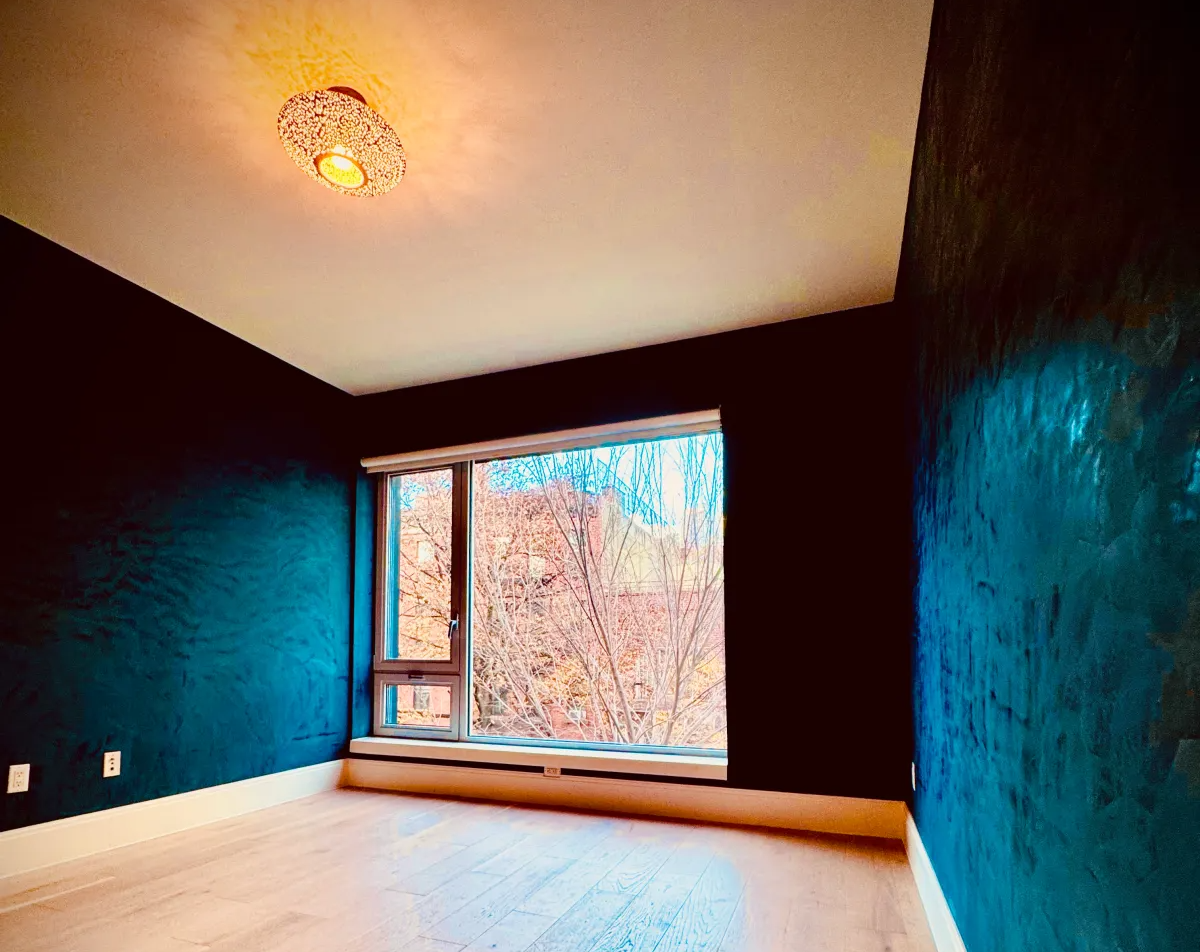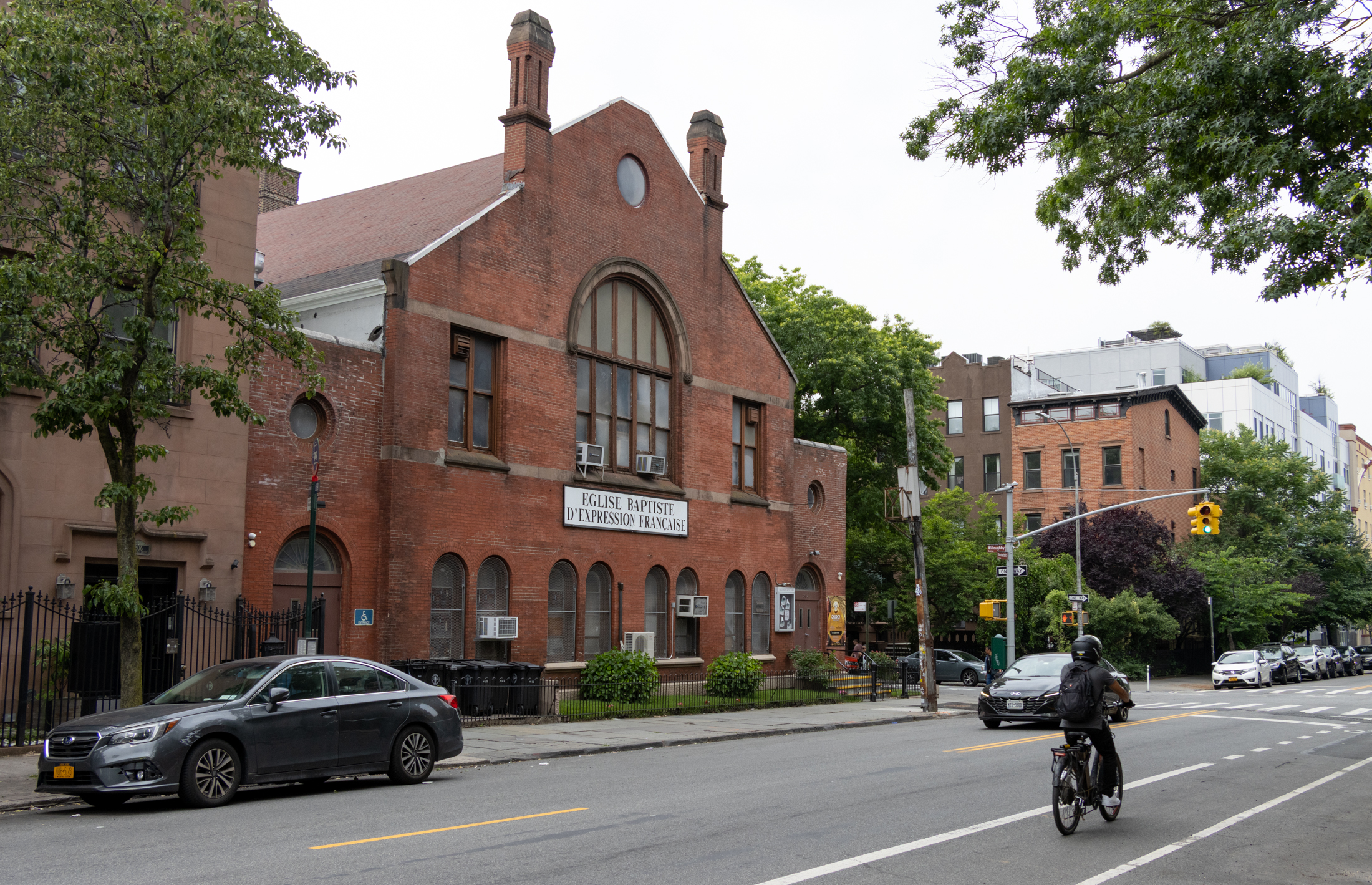House of the Day: 45 St. Pauls Place
Here’s a killer FSBO house at 45 St. Pauls Place (a street that has the distinction of never having been mentioned on Brownstoner). The turn-of-the-century limestone is dripping in architectural details. Dripping. It’s also part of a group of similar houses which together present a pretty impressive face. The house—which is described as being a…


Here’s a killer FSBO house at 45 St. Pauls Place (a street that has the distinction of never having been mentioned on Brownstoner). The turn-of-the-century limestone is dripping in architectural details. Dripping. It’s also part of a group of similar houses which together present a pretty impressive face. The house—which is described as being a one-family with an in-law apartment—is asking $1,389,000. As stunning as the house is, a couple of questions come to mind: 1) Why no photos of kitchens or bathrooms?; 2) Isn’t it a stretch to describe this neighborhood as Prospect Park South? Granted, this isn’t our back yard, but we thought PPS didn’t start until Caton Avenue.
45. St. Pauls Place [FSBO] GMAP P*Shark





I lived on St. Pauls place down the block, right across Caledonian HOspital-apartment buidling though, not a rich brownstone. There a zillion yrs ago: from 1960-1978. We finally had to leave because it was too dangerous- had been for a while. But I thought the area had changed and was good again – with my old apt. buildign turned into housing for folk from caledonian. perhaps that was all false. Sorry to hear it’s still a crime risk after all this time.I’m still waiting to come home.
Now listed at $1,250,000
What a lovely house. But a lovely home?
What troubles me about the above is the lack of respect for the traditional concept of home which was never meant to be a place to hide from the world until you could double your investment and move elsewhere … but a place to settle in, integrate with your neighborhood, and feel comfortable with your family and community social life. Those of you who aren’t raising or haven’t raised kids shouldn’t even venture to talk seriously about the safety and comfort issues in this area (not actually PPS or Caton Park, but rather “Flatbush Ave. Corridor” which contains many a lovely Victorian house). The number of risks I’ve taken in my wayward New York life, in terms of working, living and playing has furiously diminished like a detumescent phallus compared to the miniscule risks I’m willing to endure when it comes to my wife and small children. An ideal “home” would be one where you feel not only wonderful about your successes and adaptations within your own four (or more) walls, as represented by the loveliness of the inside and outside of your house, but where you feel wonderful about your neighbors, and their successes and adaptations, interacting with them and the overall community in a fruitful and rewarding fashion. I’m sure in this neighborhood you could find many cohorts that fit the above description to qualify this house as a home, no doubt! There are good people everywhere. But if my wife can’t stroll my kids on the block, without worrying what they see and hear, much less what sudden dramatic threat might strike them, then where, I ask, is the sense of HOME?
By the way, such social concerns affect all social strata top to bottom as so many posters have pointed out. There is always farther to fall and higher to climb. Families from the Upper East Side of Manhattan do angst over whether or not to send their kids to the public schools in their “home” neighborhood.
But on a been-there note, we’ve looked at a home in this area of Flatbush, two blocks down on 17th, other side of Caton (truly Caton Park) and RAN from the neighborhood. And that was on a bright lovely Saturday morning. Those who would concoct an identity based upon the grand appearance of a house, standing in a dangerous neighborhood with a highly apparent hostile influence, are baited by an ego hook that is incomprehensible to me as a parent and husband. What could this house have that could possibly make it worthwhile, at any price, at this time, for someone (with a family) looking for a real home? Yes, the many good neighbors, agreed! Good neighbors unable, nonetheless, to alter the residual flavor of the home neighborhood.
I wish the entrepreneurs, with or without families, however, happy hunting!
The bars on our English basement windows are absolutely original to our house. They are firmly installed inside the limestone surrounding the windows. We don’t have bars on our parlor floor windows either in front or back. And when we lived on a prime Park Slope block, our co-op building had bars on all the basement and first floor windows. So it says nothing about crime or the neighborhood, to have bars. Look at L.A., they all have ornate spanish style bars on the windows in 1920’s houses even in good neighborhoods. I just think it wasn’t very common to have alarm systems in homes until fairly recently, even in wealthy homes.
Also by the time your child is done with K-5 public school, you’d have to put him/her in private school anyway.
10:21–I have to largely agree with your post. We moved to Clinton Hill without any regard for the school situation because we figured we’d do private school regardless. (Or move before our infant started school.) We considered Park Slope because of the reputation of the schools but, frankly, had heard a lot about how incredibly crowded they are (from friends with kids there), even though very good quality. So I think like a lot of people, the public school issue didn’t figure in really at all to our buying decision.
Almost all row houses in New York City were built with bars on the ground floor. Beautiful, sculpted, ornamental wrought iron bars, which the Victorians/Edwardians did magnificently, are still bars, designed for security. Do you think homeowners in the late 1800’s didn’t have security issues, too? Crime wasn’t invented in the 1970’s, and if anything, was probably more of a concern then, than now. Poverty was much more desperate, and there were no social services in place to provide any kind of safety net. Look at the remaining mansions of the rich in Manhattan, such as the JP Morgan mansion. Original bars on the ground floor and cellar windows.
Kensington houses are really small. And on top of it most are 2-family with one apartment on each of two floors, not an owner’s duplex plus rental, like the brownstone neighborhoods. For those who can afford it, they don’t mind buying a large, gorgeous house in a neighborhood where they have to “truck” as Kensington Girl calls it, their kids to private schools. By the way, would you turn your nose up at a house in Manhattan? Because those people “truck” their kids to private schools too. Many people PREFER a private school regardless of where they live, because no matter how good a public school in an area might be, a private school is better. Sorry, it’s the truth. My husband says he would never have got into Princeton if he hadn’t attended private school. He thinks he would have been lost in the shuffle and not participated as actively in school, if he had been at public schools. And this isn’t NYC, this was in the suburbs so the public schools were really good where he was. I know these comments will start a debate, but I just wanted to mention this other way to think about it. It isn’t always all about the public schools, despite what realtors say.
Exactly.
Most brownstones in the NYC metropolitan area were BUILT with bars on the ground floor as an original feature. In some cases these have been removed and, sometimes, replaced with new ironwork. Sometimes bars have been added to other floors. IMO these look terrible, but that wasn’t the question.